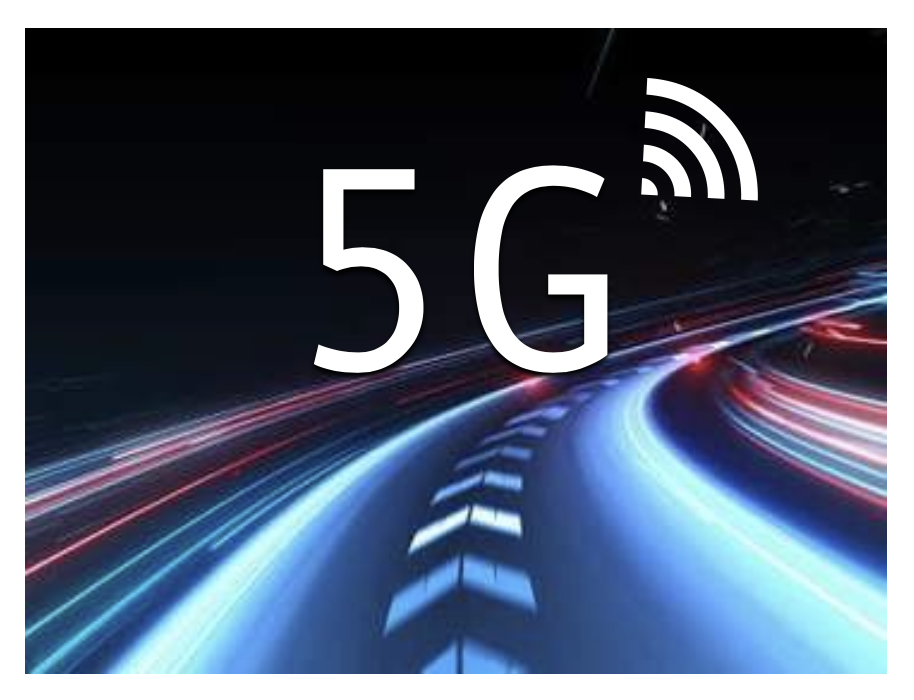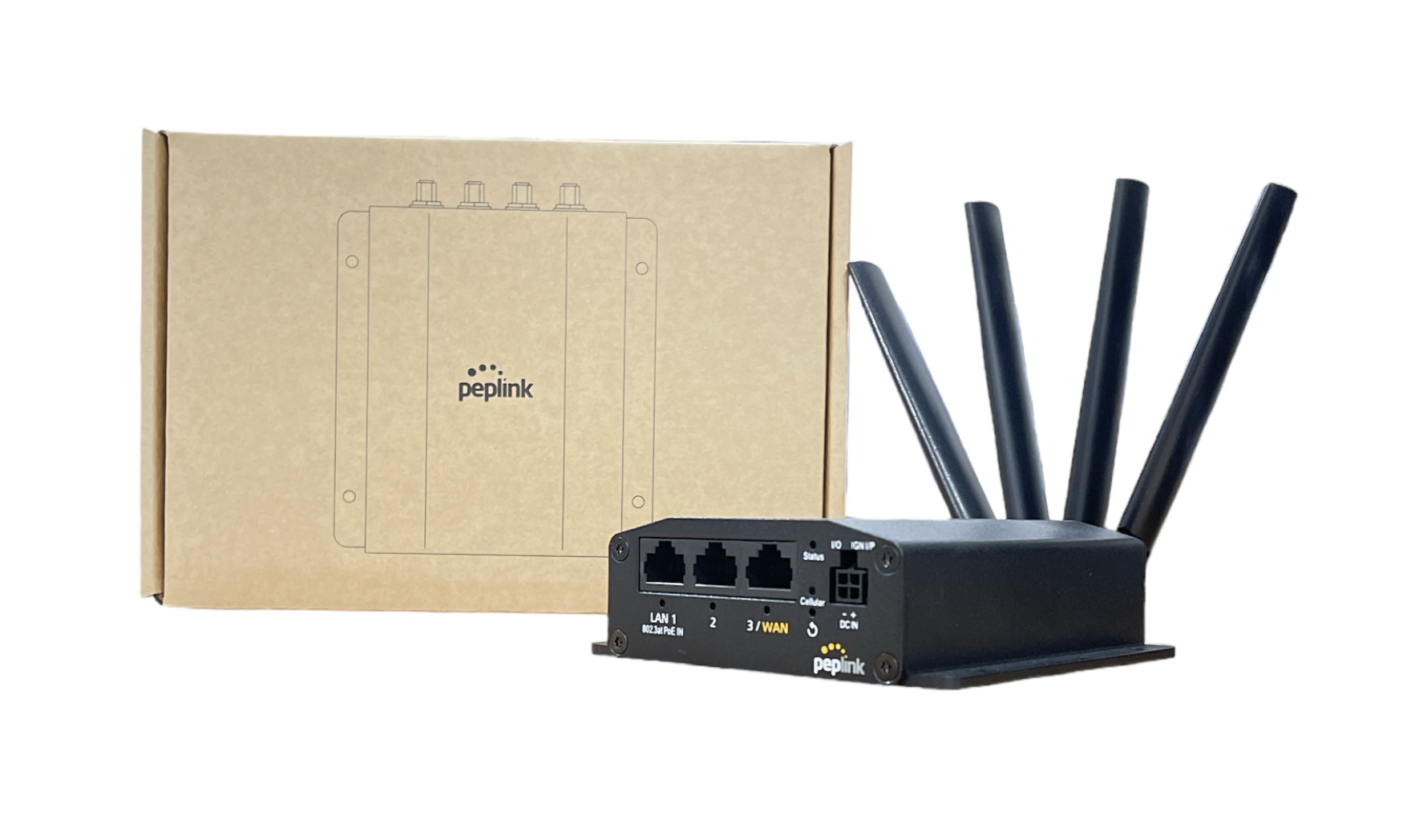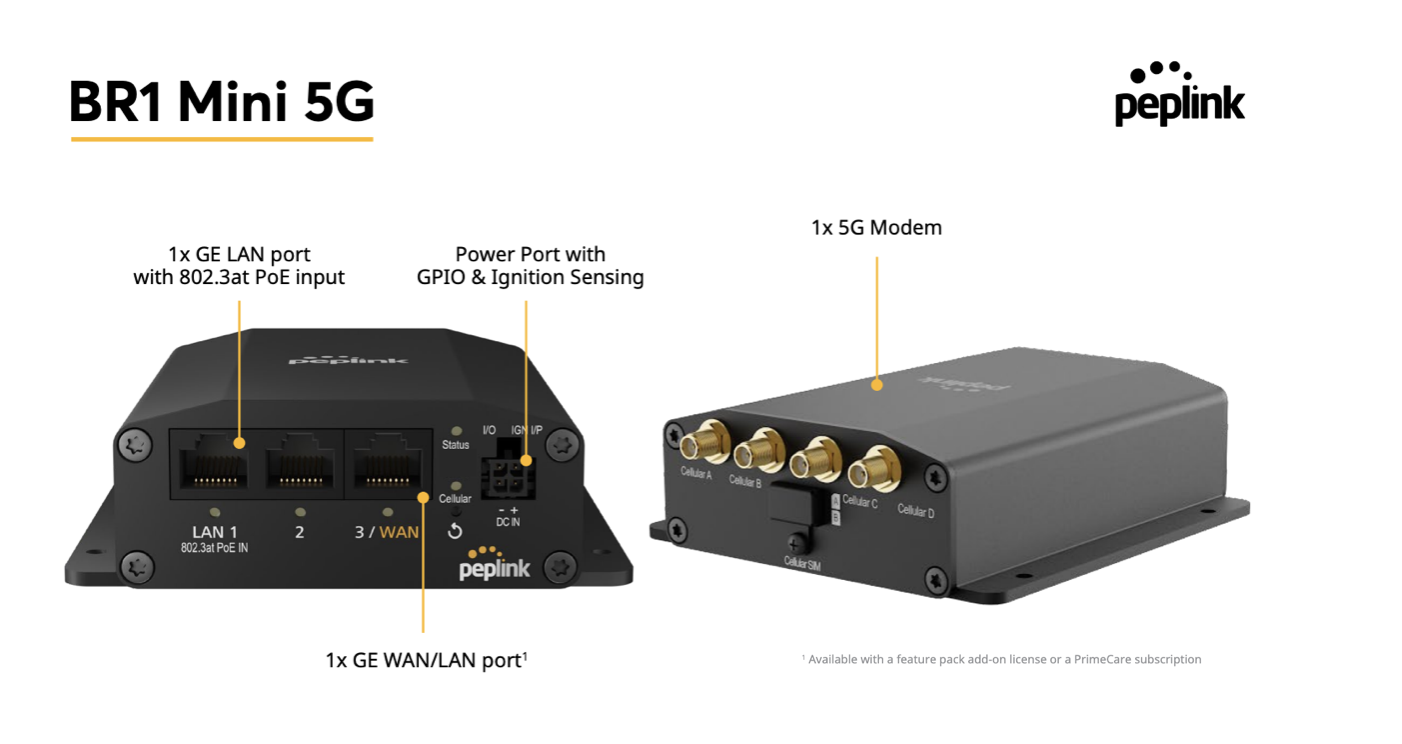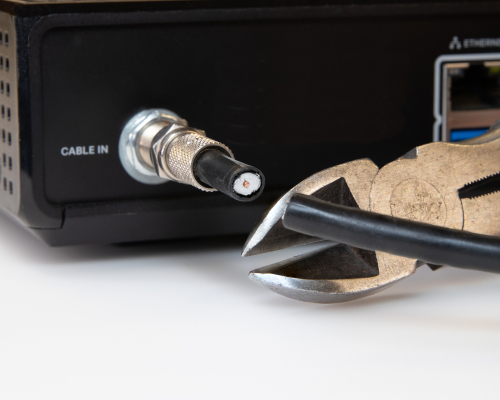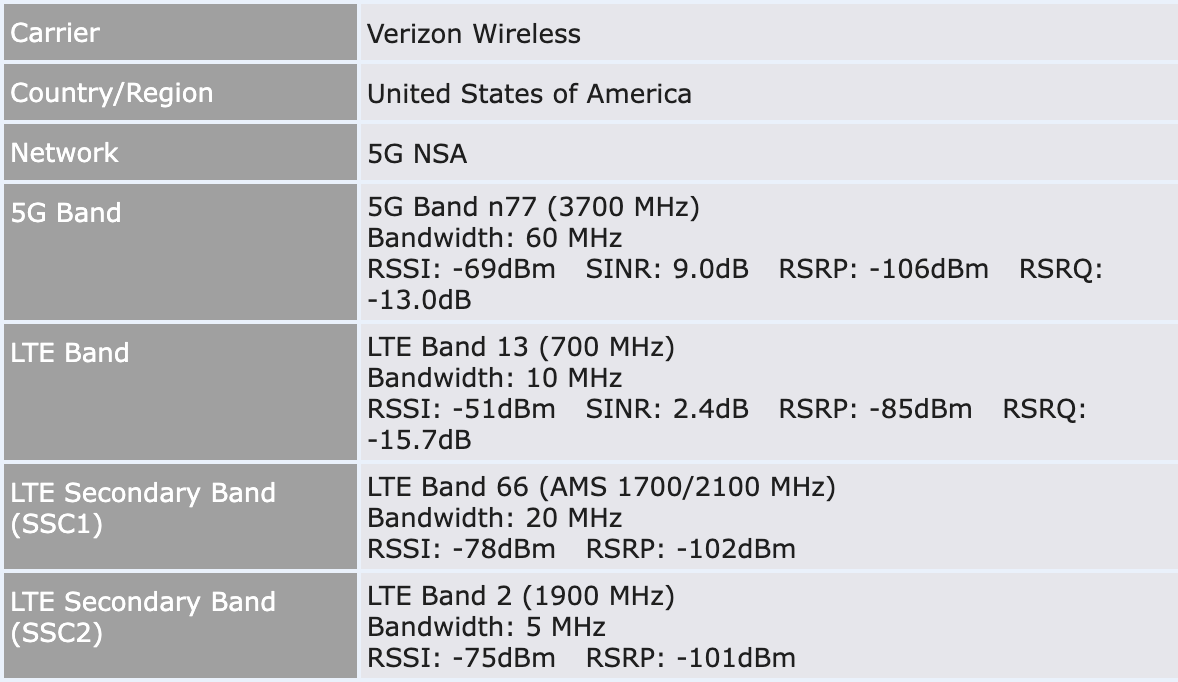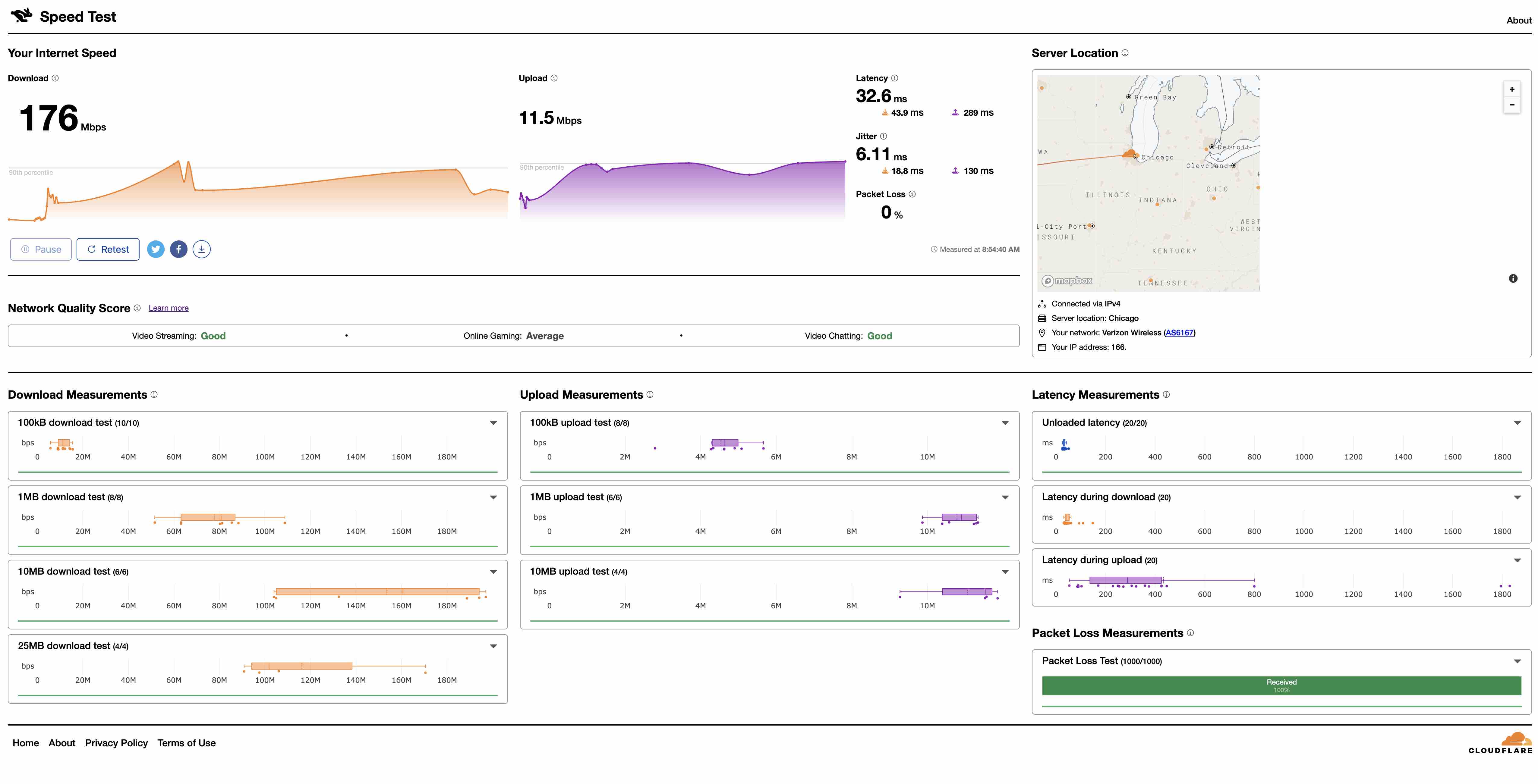90 Days in: An Update
After about 90 days of living off 5G Internet service, I am more than pleased with the experience. Have I had any issues? I’d be lying if I said no, but thankfully they’ve been minor. Things like buffering video and choppy audio on voice over IP (VoIP) calls. Regardless of those issues, I was able to use over 500GB of data in June and just over 1TB in July (unfortunately, my May usage was lost).
I found that my issues were mainly noticeable for my work purposes. This includes real time video meetings and VoIP calls. The buffering I experienced was typically while trying to stream movies during my personal time, which was acceptable. However, I wanted to look for ways to possibly improve those issues.
When I first installed the 5G service, I simply used the antennas that came with the router. These provided a decent signal and okay quality. Leaning on my experience here with 5Gstore.com, I know that signals tend to improve when there are less obstructions. This means getting the antennas outside and higher up in elevation. The best way to accomplish this is with an outdoor antenna.
I decided to install an outdoor directional antenna as they are generally more powerful than omnidirectional antennas. They are also focused in a specific direction so you can test and compare results from multiple cell towers (if applicable). This may result in not only better signal, but better quality if there’s less interference in one direction. With less interference, the speeds can normally increase too.
Since installing the directional antenna, my connection has noticeably been more consistent. That’s with a slight change in frequency band connection and small to large increase in signal and quality (depending on the band).
The speeds have usually been around 130-160 Mbps down and 13-17 Mbps up with approximately 30-40ms ping times. It would seem that a more consistent connection allows for more usage, which might explain the jump seen on my network between June and July.
Original article, published 5/23/2023:
For years, if you could get your hands on it, cable was the go-to option for both TV and Internet. However, in more recent years, 4G/5G Internet has been a game changer in the world of home entertainment and remote work. “Cutting the cable” might be something you’ve heard a lot recently, especially if you’re subjected to any commercials on live TV or the radio. Making the switch from cable to 4G or 5G Internet can save you money and headaches from outages or overall unsatisfactory service – or so they say. Can it really? I’m here to answer that question, at least based on my own experience with Comcast/ Xfinity. However, this article applies if you are wanting to leave COX or Spectrum.
A Little Background
I’ve been using Comcast/ Xfinity cable for TV and Internet pretty much since it became available. The ease of accessibility was something I quickly grew accustomed to. As time went on, the Internet speeds got faster and more channels were added to the TV lineup. I was addicted on all accounts. Although catching new episodes of my favorite shows was always a struggle.
Eventually, I grew up and became an adult living in a world of endless entertainment and high speed Internet. I got married to a man just as interested in TV and film as I was. Neither of us had ever lived without cable so it was natural we got cable for TV and Internet when we bought a house. At that time, we marveled at all the content available and felt fortunate to have such high speed internet when so many others do not.
Having this cable connection allowed me to start working from home almost 12 years ago. I was convinced cable was the best and most reliable connection to have for this purpose. So here we are, two people and a bunch of connected devices with download speeds of up to about 250 Mbps and upload speeds of up to 15 Mbps. This is way more than we ever needed for personal or work use. Still, I believed I had no other choice for a reliable Internet service, especially because my husband and I thought we needed cable TV. After all, the overall cost for TV and Internet was only slightly higher than Internet by itself.
Working for 5Gstore.com
After some time working from home, I was provided a cellular modem to use as a backup Internet connection. This was a modem that 5Gstore (previously 3G store) both sold and supported, so it helped me on a few levels. I found the connection to be sufficient for my work use, but couldn’t imagine trying to live off that for personal use. I liked to download a lot of audio and video content as well as play games online, which all required more bandwidth speed than I saw a 3G service could provide.
Gradually, the 4G/5G services started to improve and I could see the capabilities were growing. However, from working with customers who were solely working on cellular, I discovered that it still would not seem adequate for my personal use. Mainly because of the amount of data I would need to use for both work and personal use. From what I could see on our cable usage, we were using anywhere from about 60 GB to 900 GB. We definitely needed an unlimited data plan.
Making the Decision to Switch from Cable to 5G
Over just the past year, there have been multiple choices for Internet service and video content available to me. It was important that I have something reliable and as consistent as possible with its bandwidth speeds. Unfortunately, I couldn’t find anything better than my cable connection and I gave up pretty quickly.
More time passed and both my husband and I found ourselves watching less and less cable TV and more content on streaming services. Nothing interested us on cable. Or, the content that was on could easily be accessed later without commercials. So why would we bother watching it live?
When 5Gstore announced their 5G unlimited data plan with no overages or throttling, I jumped at the chance to check my service. I live just outside of Chicago, which is thankfully in a coverage area. This changed my outlook on everything. I already knew that I could work off 3G and 4G cellular service. I also had been seeing and hearing reports of over 100 Mbps download speeds and higher, which I knew would be sufficient for my personal use. I was on board to at least test it out. As an added bonus, I had a chance to finally use the Peplink MAX BR1 Pro 5G!
The Transition from Cable to 5G
Coming from a household that has had cable Internet and TV for decades, it was a little strange to consider canceling. After all, I was technically sacrificing some bandwidth speed as well as all the channels and on demand video content our TV plan had to offer. I decided to keep both plans in place for a month. The goal was to perform comparison testing during this time. Though I also still wanted access to the cable in case the cellular became unusable. This would hopefully provide a smoother transition, while allowing my husband and I to see if we could live without cable.
The first part of the process was checking my address for service. This was done in a matter of minutes since it was during the work day. Next, placing an order from 5Gstore.com. This was simple and an even faster step. Not just because I work for the company, but because I took the same steps that any customer would take.
In my case, I started using the 5G unlimited data plan. This is considered a Fixed Wireless Access (FWA) type of Internet connection that requires address verification because of limited tower availability. It operates directly off the Verizon cellular network and can connect to C-Band frequencies, which can provide faster, more reliable speeds.
Overall, this was a smooth transition. Sure, my experience in this business helps, but this is something that anyone can do. Just let the 5Gstore sales team assist you with selecting the appropriate data plan and 4G/5G router or modem first. Once you’ve got your hands on the SIM card and hardware, the installation is quick and easy. In fact, you could be set up and ready to go in a matter of minutes.
My Experience Living and Working on 5G
The Peplink MAX BR1 Pro 5G swapped in for the cable modem nicely. I found a great location in my home where I was able to get a decent 4 bar, or roughly -96 dBm to -113dBm RSRP. I was able to get a consistent 5G signal on the C-Band (5G band n77) along with a signal over 3 additional 5G and 4G LTE bands. This was achieved with the Peplink and its stock, paddle style antennas.
My current work involves uploading and downloading lots of files. Even with the roughly 100 Mbps slower download speeds, I did not see much difference when downloading over cable versus 5G. The upload speeds from 5G were actually quite comparable to cable. Typically, upload speeds were around 10 to 13 Mbps so uploading files was barely noticeable in comparison to uploading over cable.
Occasionally, I am on the phone using VoIP service or on a video meeting. I would say that 99% of the time, my experience is excellent. The other 1%, the audio on a phone call will cut out for a moment and then return. For the most part, video meetings were just as fantastic. In some cases, it even appeared to be better than what I saw over cable.
When I use streaming services for TV and movies, I normally try to watch in 4K when possible. I was surprised that there were no issues with this. Then again, the download speeds are still way higher than my husband and I need. In comparison to the roughly 250 Mbps from cable, I normally received between 120 Mbps and 170 Mbps. That all being said, it would be difficult for me to tell the difference from cable. This was a pleasant surprise.
Regarding my data usage I gathered information over a complete month of testing (April 1st to April 30th). My usage totalled about 741 GB. Of that, my work PC used 121 GB and my work phone used 532 MB.
On a side note, this 5G unlimited plan, and a 4G LTE plan that 5Gstore offers, come with a static IP address. I found this extremely useful for setting up a VPN connection between my router and a colleague’s for easy access to devices on my LAN. I could also see it helpful if I wanted to access my personal files remotely when on vacation. Naturally, there are pros and cons to everything. So, while it proved to be helpful for my business use, it was otherwise frustrating for personal use. How could that be? Well, in order for a static IP address to work in this case, it had to be routed through a connection in Nebraska before reaching me in Illinois. This caused my devices without GPS capability (everything but our cell phones) to think they were in Omaha rather than Chicago.
Why was this frustrating? All the commercials and local television access I had through streaming services like Amazon Prime, Hulu and Paramount+ were showing me content from Omaha and there was no option to change this to Chicago. Once the static IP address was removed from the line of service, it fixed the issue and all local content started coming from Chicago. Keep this in mind if you plan on purchasing a 5Gstore.com data plan for home use. Simply request we do NOT include the static IP when checking out and we’ll ensure it’s not included.
Final Thoughts
Without cable service, I’m saving a little over $100. Not only is the 5G data plan cheaper, but there’s no hardware fees for renting hardware. You own the hardware and the SIM card is a one time fee. There’s no activation fees either like there are with some 4G/5G services. These savings even include the cost of streaming services. Those services are currently Amazon Prime, Disney+, Netflix, and Paramount+ with Showtime.
So, is it worth it? I’d say yes! Whether you have COX, Spectrum, Charter, or Xfinity like me, it’s definitely worth the switch. Not only have I had 24/7 service, but my speeds have been pretty consistent and more than adequate for my usage. They’ve also been comparable to cable. The great thing about the data plan, aside from being so much less expensive, is that there’s no contract. We pay month to month and can cancel any time. Should I ever need to renew the service [after canceling] I would just purchase a new SIM card and data plan for my router.
If you’re considering making the switch, it’s worth doing your research to find a provider like Verizon or T-Mobile, along with a plan that works for your needs. Check your coverage first and see if our 5G Unlimited data plan is available in your area. If this is not available, see what other types of data plans are offered and verify if they will work with the amount of usage you and any others may require. Check with the team at 5Gstore.com to see what hardware and data plan may be the best solution for your needs. With the right setup, you may find that cutting the cable is the best decision you ever made.
